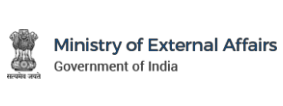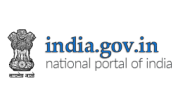Dr. Jessica Mathews, President, Carnegie Endowment,
Thank you for asking me to speak at this centre of intellectual excellence, which is recognized around the world. Carnegie has been instrumental in promoting closer India-US ties. It is an honour to be here and a pleasure to be back among friends.
I was asked to speak on India-US relations, which are poised at an important moment, a few weeks before what will be a historic visit to India by President Obama. Ours is a partnership that has come a long way in a relatively short time, and that still has enormous potential. It has not always been easy, but to my mind, now is the time for both our countries to be ambitious about the relationship. Let me try and explain why I think so.
India-US relations today
India-US relations are today better than they have ever been. The transformation to a strategic partnership is the result of farsighted decisions by leaders from both sides of the political aisle in both countries, by Presidents Clinton, Bush and Obama, and by Prime Ministers Vajpayee and Manmohan Singh.
The intensity and breadth of engagement is unprecedented. Prime Minister Manmohan Singh and President Obama have met six times in less than 18 months so far. Whether it is their shared vision on global economic recovery, or an effort to find a way forward at Copenhagen, or their shared concern on nuclear terrorism and security, there is growing capacity and will in the two countries to work together on the global stage.
Flowing from the pace set by our leadership, the engagement and dialogue at every level of government has been equally intense.
Today India and the USA cooperate in every significant aspect possible between two nations, peoples and states. If anything, the creativity of our entrepreneurs, engineers and scientists has sometimes exceeded that of our political structures. We work together in innovation and technology, creating jobs and promoting inclusive growth and development. We do so in national security, counter-terrorism and defense. And we also do so on regional and global issues.
Political dialogue and strategic consultations have grown immensely. It is comprehensive, candid and comfortable, and is characterized by mutual respect, even when we do not necessarily agree.
The transformation in relations was epitomized by the civil nuclear initiative which is now in the final stages of inter-governmental action before commercial decisions make it practical reality.
The US is India’s largest trading partner. Over the last five years US exports to India have grown faster than those to any other major destination. They have also grown faster than India’s exports to the USA. India has consistently and consciously chosen to run a current account deficit of between 2.5-3% of GDP. Our bilateral trade is largely balanced. It is not very well known that our trade in services too is in balance. The more we sell to the USA the more we buy. India’s exchange rate is set by the market. India’s experience has taught us that mercantilism and protectionism are not the way forward.
India and the US are working together on innovative solutions to clean energy issues. Science, and the creativity of our peoples, offer us a chance to work together using modern technologies to solve historically stubborn problems of hunger, disease and illiteracy.
The Indian diaspora in the USA provides living proof of and encouragement to the benefits of US-India engagement.
With dialogue forums ranging from education and health to space and counter terrorism, and the high level strategic dialogue headed by Secretary Clinton and EAM Krishna, India and the US are more engaged than ever.
The bilateral underpinnings of the relationship are strong.
Congruent interests and shared values
How has it been possible to achieve this transformation so quickly? To my mind the real answer is that ours is more than a transactional relationship, a relationship based on short-term bargains of self-interest or zero-sum calculations. Such a relationship could only ever satisfy partially.
There is indeed a congruence of interest between our nations.
For India the US is a crucial partner in our enterprise to abolish mass poverty within a democratic framework and open society, while respecting human rights and rule of law. Our first Green Revolution, which made us self sufficient in food-grains, was achieved with the US. Looking forward, we hope to work with the US on the entire range of developmental issues from clean energy to food security to infrastructure. As we seek to build the knowledge societies necessary to meet future challenges our scientific, technological and innovation collaboration becomes ever more important, as does opening up high technology exchanges by modifying outdated export controls.
I would suggest that for the US as well India offers a reliable partner as both countries secure their economic futures. India offers a large and growing market for the US, creating jobs in both economies, adding competitiveness to US firms, and synergy in innovation and technology.
As India’s capacity grows, our congruence of interests on international security issues is expressed more and more practically, in counter-piracy operations off the coast of Somalia, in our cooperation against terrorism, and in our work on the global commons of the oceans, space, cyber space and the air. It is expressed in what we do for regional stability, disarmament and non-proliferation.
Ours is also a relationship that is based on shared values and a common quest for a world that reflects those values. Those values are pluralism, democracy, rule of law, enterprise, respect for diversity and human rights, tolerance and secularism. Those values lead us to seek an open, rule based and democratic world order, where each of our citizens is free to achieve their full potential.
It is the commitment to these values that sometimes also leads to elevated expectations and the higher standards that we hold ourselves and each other to. Indians sometimes feel that we are held to standards that the US does not always impose on other states. Equally, when American friends find Indians preachy, it may be because we expect you to live up to our shared values.
President Obama’s visit
Given these strong bilateral underpinnings, congruent interests and shared values, what should we expect from President Obama’s November visit to India?
The visit offers us an opportunity to put into place a longer term framework for the India-US strategic partnership, and to add content to that partnership in several areas that are now ripe.
Our goal must be to gear our bilateral cooperation towards making our two countries stronger, safer and more prosperous.
As we add substance to the framework for the future of our relationship, we must consider the changing nature of our societies. Twenty-seven years of over 6% growth, (now trending at around 9%), demographic changes and sociological changes (including urbanization and the growth of services) have profoundly impacted how India sees herself in relation to the world.
A major area for initiatives is the economy and trade. India today offers a growing market and a partner in improving the international competitiveness of US companies, creating jobs in both countries. I would hope that the visit will result in several concrete initiatives in this area.
Our priorities do not in any way conflict with those of the USA. We seek a peaceful, secure and stable periphery around us in West, Central and South East Asia, engaging China, attempting to build a relationship with Pakistan, contributing to Afghanistan’s reconstruction, and working for good neighbourly relations with our immediate neighbours.
In today’s international situation, India-US relations are an important factor for world peace, stability and progress. An open, balanced, and inclusive security architecture in Asia and the world would be a goal that is in our common interest. So too would be rules of the road (or codes of conduct) for the global commons, developed internationally through a democratic process of consultation and negotiation. These become ever more important as we move to a world where several major powers both compete and cooperate with each other, interdependent due to globalization but still driven by balance of power considerations.
Traditionally, India and the USA have viewed each other across the Eurasian landmass and the Atlantic Ocean. We get a different perspective if we look across the Pacific, across a space that we share and that is vital to the security and prosperity of our two countries.
Apart from changing geopolitics, the emergence of new transnational and global threats also brings us together.
For instance, there is much we have in common in disarmament and non-proliferation. We both have a shared vision of a world free of nuclear weapons. We should support moving step by step to reduce the salience of nuclear weapons, pending their complete elimination. And we both seek to reduce nuclear dangers, whether from terrorists gaining access to nuclear weapons or from nuclear proliferation.
And it seems to me that we both have a common interest in reforming the institutions of global governance to reflect today’s realities and to make them capable of dealing with today’s challenges.
To sum up, India and the USA stand at an important moment in our partnership. As a result of consistent efforts by successive governments and administrations in both countries, our bilateral strategic partnership is strong. The time has come to realize its international significance. President Obama’s visit gives us an opportunity to do so.
Conclusion
One final word to those in our countries who still ask: “Is India a responsible power?” or “Is the USA a trustworthy partner?” My answer is an emphatic yes. But the corollary is that we must be sensitive to each other’s vital and important national interests. And we must strengthen the habit of working together, intensifying strategic consultations.
As I have tried to show, this partnership is based on more than immediate transactional advantage. I do not underestimate the human capacity for folly. But, with common values and a vision of a better world order and shared interests, I am confident that if we each proceed from our own ideals and interests, we will impart long term stability and an enduring significance to our partnership.







